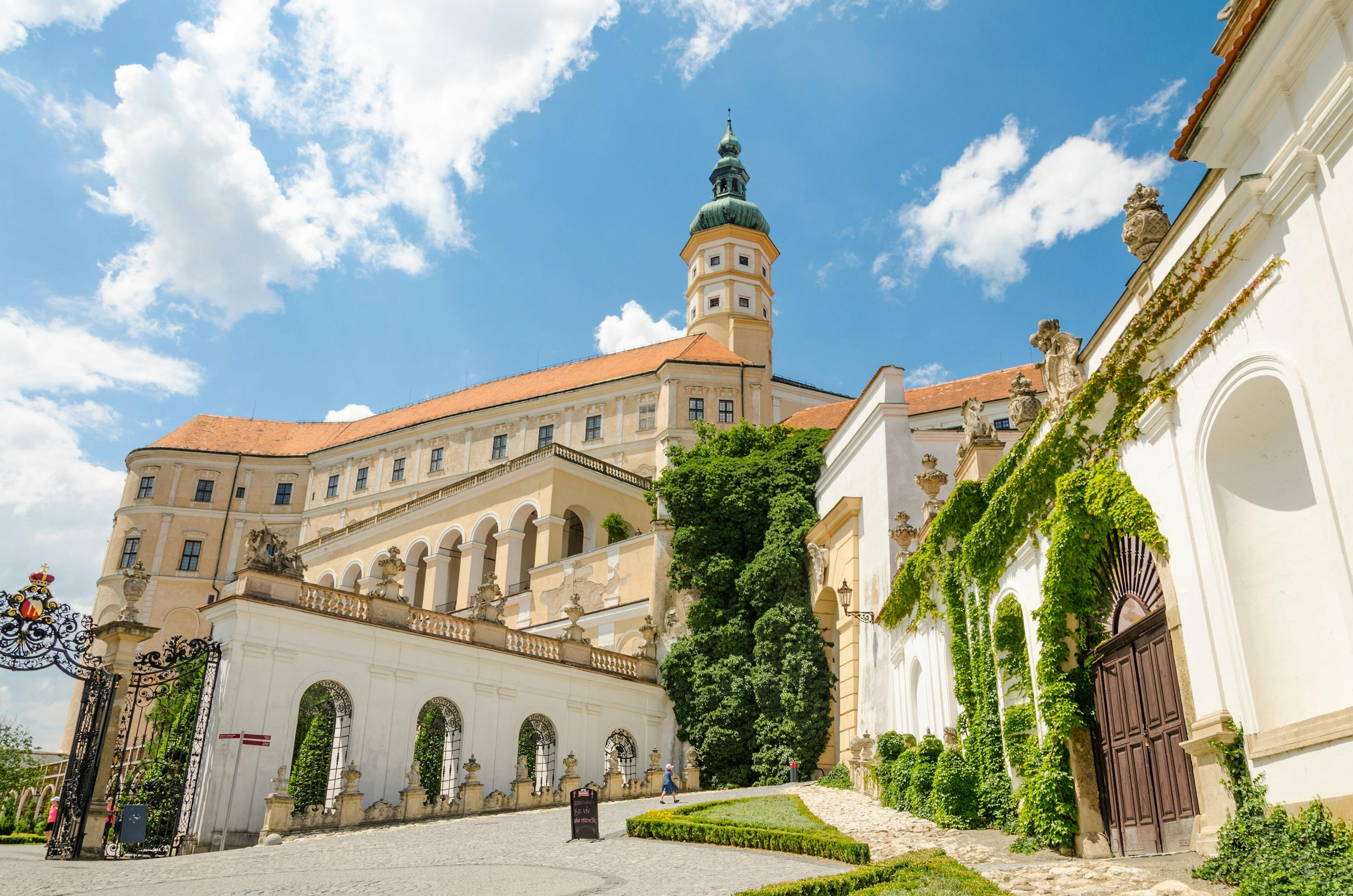Mikulov Educational Wine Trail
The thematic nature trail introduces visitors to the history of the area below Pálava, a region rich in millennia-old wine traditions. The 20-kilometre route of the Mikulov Educational Wine Trail can be completed on foot, by bicycle or by car. The route is marked and equipped with 17 information panels.
Characteristics of the trail
The starting point of the trail is the parking lot at Komerční banka just below Mikulov Square, where the first panel with introductory information is located. From there you go through the town centre to the Church Square, where information about the Mikulov wine region is available. Here you can take a detour to the castle and its cellars, which contain one of the largest historic barrels in Europe (101,000 litres).

The 20-kilometre route of the Mikulov Educational Wine Trail can be completed on foot, by bicycle or by car.
Then the route leads you out of the town towards the wine-growing villages lying directly below the Pálava River. Before you drive down to Bavaria, you will learn about the ecology of the vineyard and the possibilities for its biological protection. In Bavaria, the panel will introduce you to the history of this wine-growing community. From Bavaria, you will continue along a field road to Perná, the seat of a famous wine-breeding station. This is also the birthplace of the successful cultivars of Pálava and Aurelius that enrich the varied varietal offer of the vineyards in the region below Pálava. In the village and its surroundings you will find several panels on the history of the village, mining law and the breeding of varieties. There is also a mention about phylloxera.

The wealth of architectural monuments makes Pavlov one of the best preserved wine-growing villages and a unique conservation area.
The journey continues on through Horní Věstonice (a panel about the history of the village) to the more famous Dolní, the site of the discovery of the world-famous Venus of Věstonice. Here you will find not only an archaeological exhibition but also a panel with a map of the nature trail and information about the history of this wine-growing village. An interesting chapter was written at the turn of the 16th and 17th centuries by the Habans - the New Christians who raised the level of a number of fields, including winemaking. In the village, the Haban cellars are still preserved. From Věstonice the route continues to Pavlov. The wealth of architectural monuments makes Pavlov one of the best preserved wine-growing villages and a unique conservation area. The historic cellar houses in Česká Street are especially worth seeing, but you should not miss the municipal wine shop. As you will learn from the information panel, there are also organic grape and certified organic wine producers in Pavlov.
The last part of the wine trail leads through the forest from Pavlov along the road to Klentnice, situated under the ruins of the Orphan's Castle. The last, seventeenth map board is located at the crossroads to Perná, completing the set of information panels.